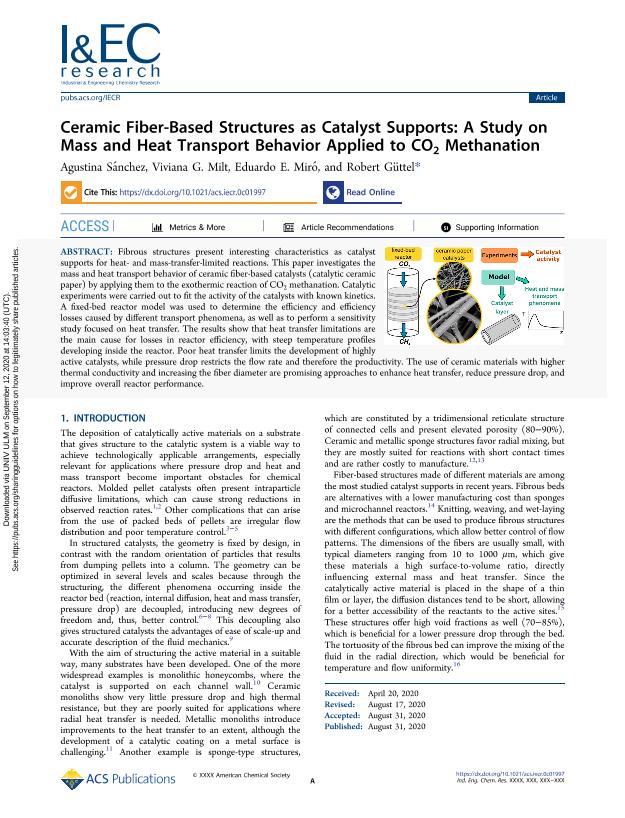Artículo
Ceramic Fiber-Based Structures as Catalyst Supports: A Study on Mass and Heat Transport Behavior Applied to CO 2 Methanation
Fecha de publicación:
08/2020
Editorial:
American Chemical Society
Revista:
Industrial & Engineering Chemical Research
ISSN:
0888-5885
Idioma:
Inglés
Tipo de recurso:
Artículo publicado
Clasificación temática:
Resumen
Fibrous structures present interesting characteristics as catalyst supports for heat- and mass-transfer-limited reactions. This paper investigates the mass and heat transport behavior of ceramic fiber-based catalysts (catalytic ceramic paper) by applying them to the exothermic reaction of CO2 methanation. Catalytic experiments were carried out to fit the activity of the catalysts with known kinetics. A fixed-bed reactor model was used to determine the efficiency and efficiency losses caused by different transport phenomena, as well as to perform a sensitivity study focused on heat transfer. The results show that heat transfer limitations are the main cause for losses in reactor efficiency, with steep temperature profiles developing inside the reactor. Poor heat transfer limits the development of highly active catalysts, while pressure drop restricts the flow rate and therefore the productivity. The use of ceramic materials with higher thermal conductivity and increasing the fiber diameter are promising approaches to enhance heat transfer, reduce pressure drop, and improve overall reactor performance.
Palabras clave:
CERAMIC FIBER
,
CO2 METHANATION
,
REACTOR MODELING
,
HEAT AND MASS TRANSPORT
Archivos asociados
Licencia
Identificadores
Colecciones
Articulos(INCAPE)
Articulos de INST.DE INVEST.EN CATALISIS Y PETROQUIMICA "ING. JOSE MIGUEL PARERA"
Articulos de INST.DE INVEST.EN CATALISIS Y PETROQUIMICA "ING. JOSE MIGUEL PARERA"
Citación
Sánchez, Agustina; Milt, Viviana Guadalupe; Miro, Eduardo Ernesto; Güttel, Robert; Ceramic Fiber-Based Structures as Catalyst Supports: A Study on Mass and Heat Transport Behavior Applied to CO 2 Methanation; American Chemical Society; Industrial & Engineering Chemical Research; 59; 38; 8-2020; 16539-16552
Compartir
Altmétricas




